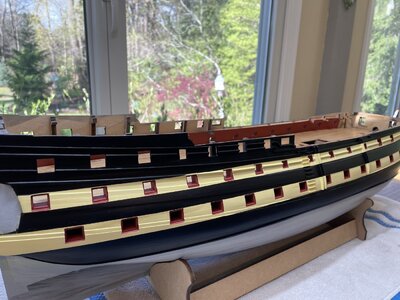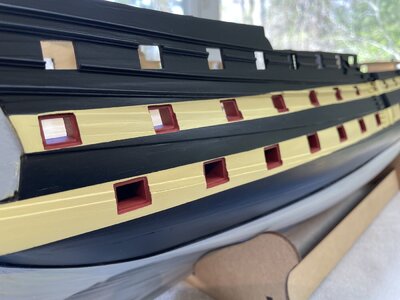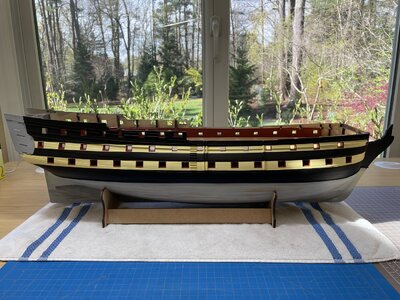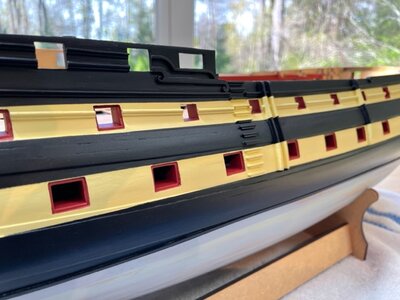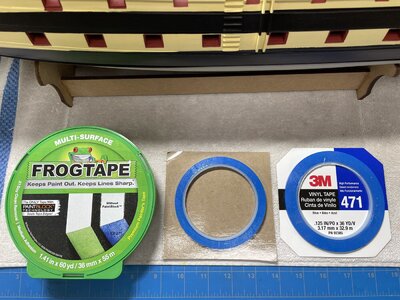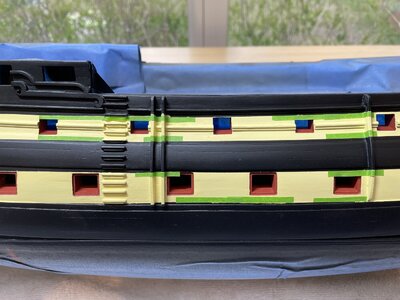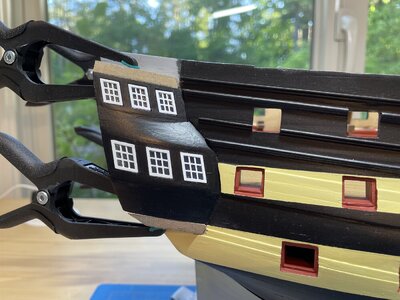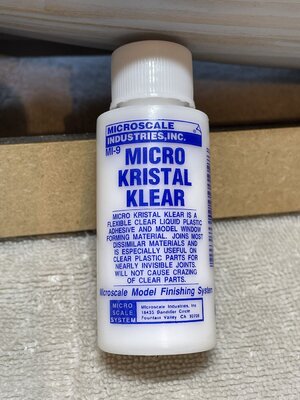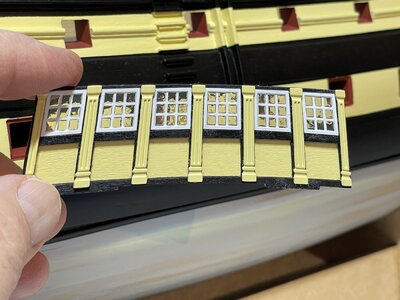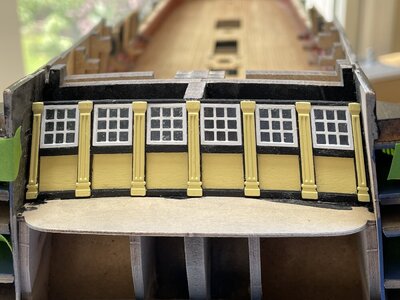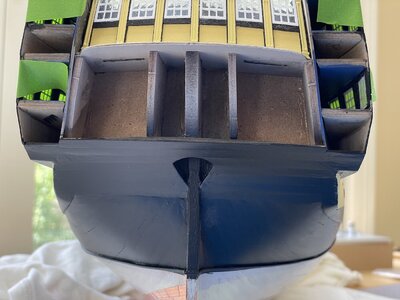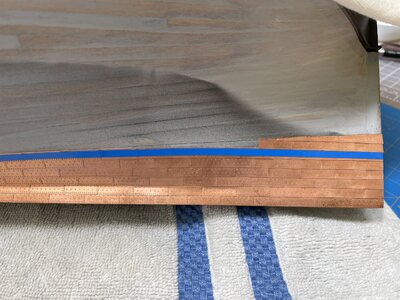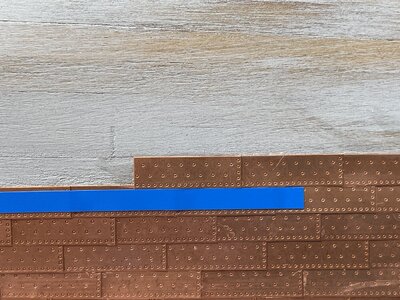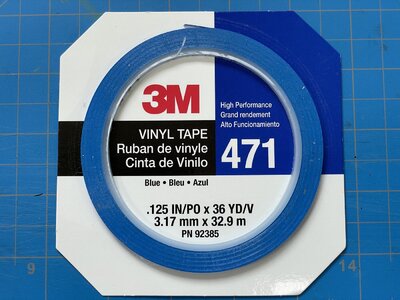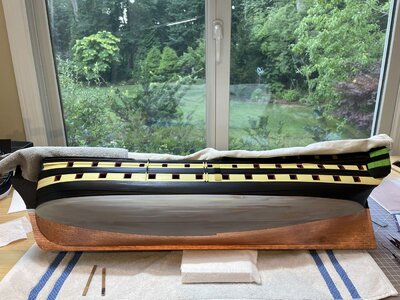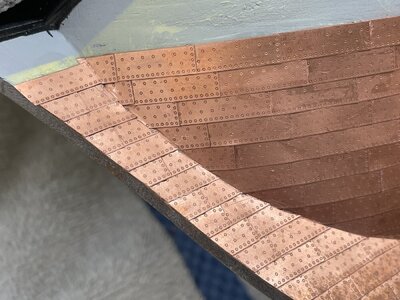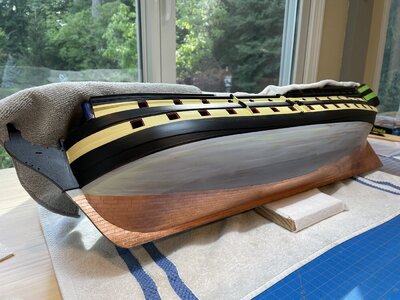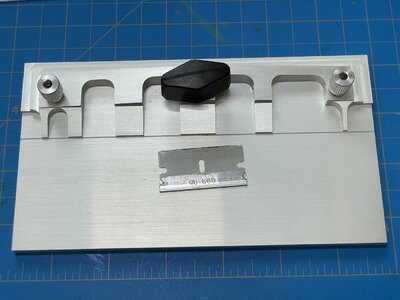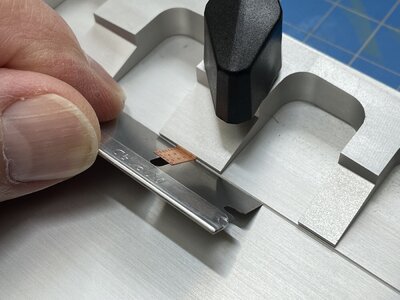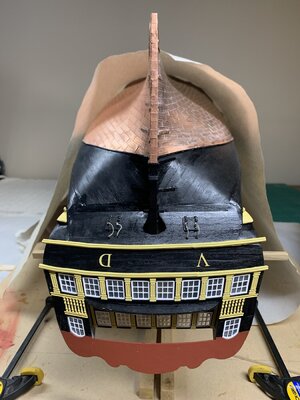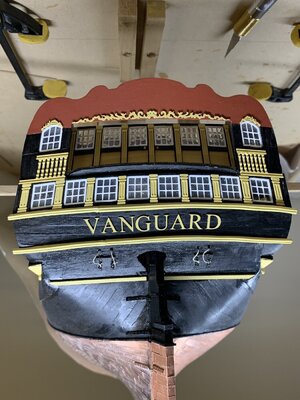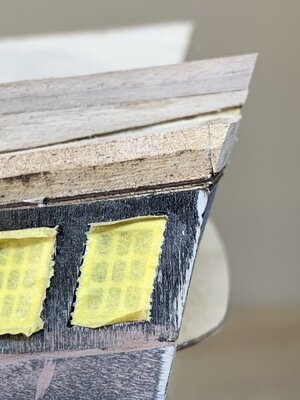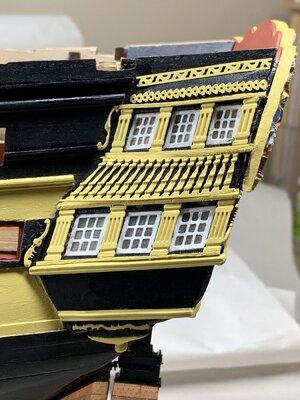Thanks Andre for this detailed explanation of your technique. Your work looks so incredibly good, I like the others are very keen to know how to achieve such clean precision.Hi Fights-On,
Thanks so much for your comments!
If you decide to add the wood batten at the waterline, I thought I should add a little more about how I attached it to the hull. The strip of wood is so thin and flexible that I think it would be difficult to apply it in a straight line along a pencil line, especially when dealing with glue.
View attachment 364538
I first used vinyl masking tape along the pencil line. It’s much easier to lay the tape down than the strip of wood, and if the tape is not straight, you can just move it. The tape has just the right thickness that you can push the strip of wood against it as you are gluing it. I applied a small blob of CA glue on a polystyrene sheet and used a hypodermic needle to pick up and apply a few inches at time to the strip. The vinyl tape will give a nice straight line for the wood batten.
View attachment 364539
I too have laid a batten on my Vanguard. I used some of the 1x1 stock but will probably find I am missing some for later use in the build.
When I laid the batten, I pinned a series of pins along the line and used PVA glue to glue down the strip and held them in place with a light alligator clip onto the shaft of the pin. Your method looks to get a better result.
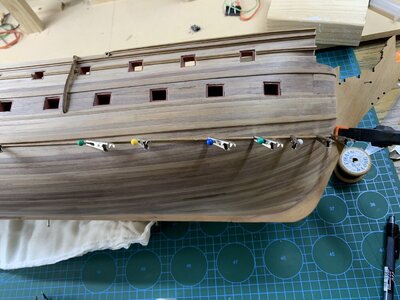
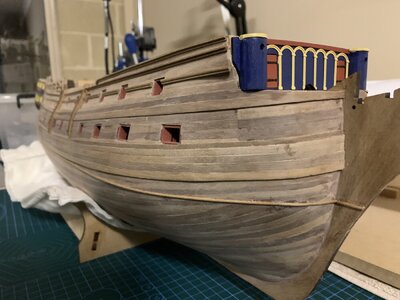




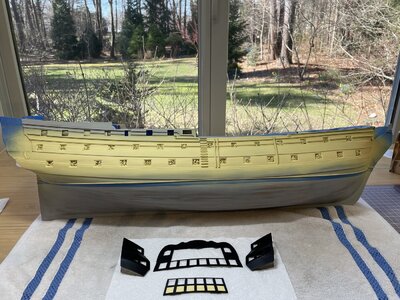
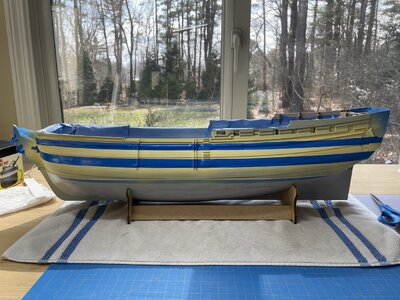
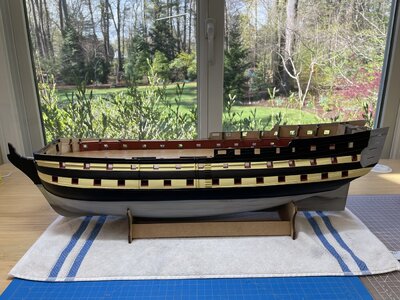
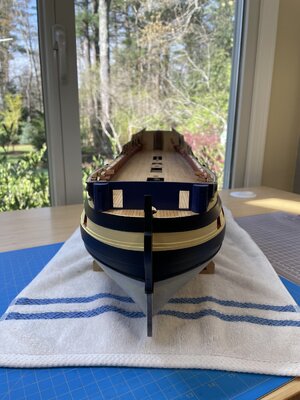
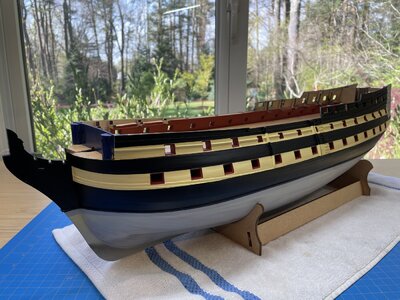
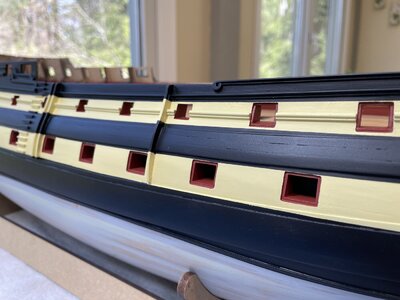
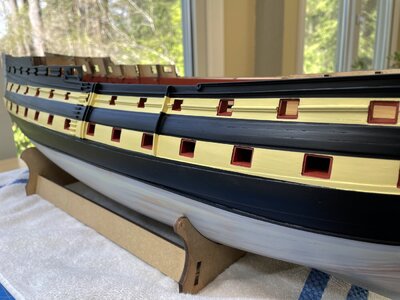

 - but who can argue with a result like that! As nice a painted finish as I've seen. Congratulations!
- but who can argue with a result like that! As nice a painted finish as I've seen. Congratulations!